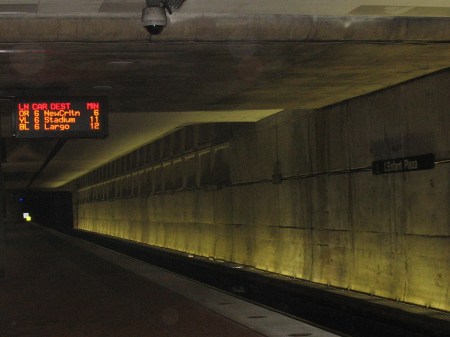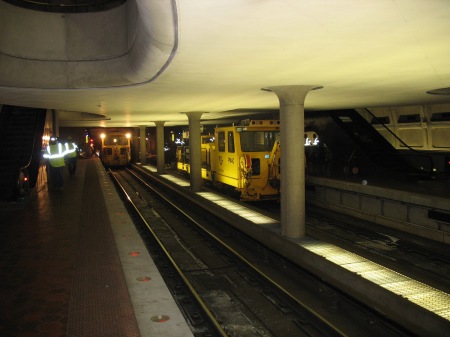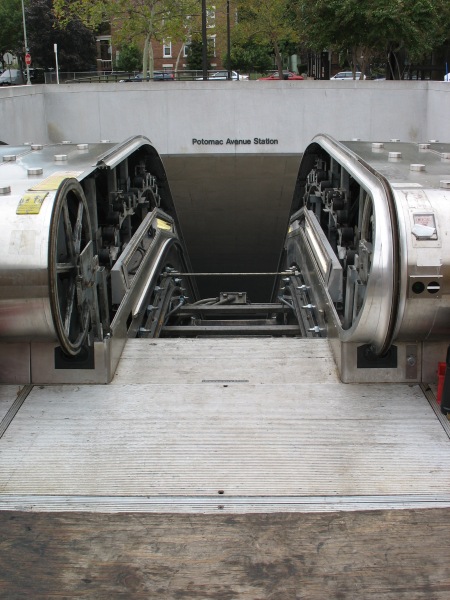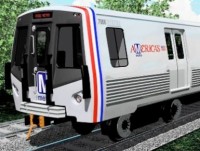(This is a follow-up post to Neil Flanagan’s initial post on GGW, as well as my own posts here and here)
The McMillan Two plan tackles a project of enormous scope, yet there are still several areas of the plan that need more emphasis. The plan should be praised for its scope, vision, and long timeframe, yet as it stands, it is an incomplete idea that needs more depth to meet all the challenges DC will face over the next 50-100 years.
Similarly, the plan should be praised for its limits, as it lays out a skeleton for DC to grow around, rather than prescript every nook and cranny. However, this limited breadth is also a major weakness in translating the plan from a handsome image into physical reality.
The following are four weaknesses in the current idea that could become strengths with the right amount of focus.
Transportation
The McMillan Two plan includes several implicit transportation initiatives. Most notably, the plan calls for the full removal of the freeways flanking the Anacostia – both the Southeast/Southwest and Anacostia freeways. Nir Buras notes that streetcars could be added to the plan, as his plan continues the framework of the L’Enfant grid and radial avenues, maintaining the wide rights of way that could be amenable to streetcars. However, any other discussion of transportation is strangely absent from the plan.
While the L’Enfant plan laid out the skeleton to the city and the McMillan plan made Washington into the City Beautiful, the element that’s added (or re-added) the meat to the city’s bones over the past 30+ years has been Metro. Metro has shaped suburbs and provided a mechanism for repopulating downtown.
Similarly scaled projects and plans around the world all feature substantial investments in transit infrastructure. Both Canary Wharf in London and La Defense in Paris feature large transit investments. Nir Buras might not like the form of these developments, but they fit the scope of McMillan Two. In London, Canary Wharf features both the Jubilee Line extension while also serving as the hub for the massive investment of the Docklands Light Railway.
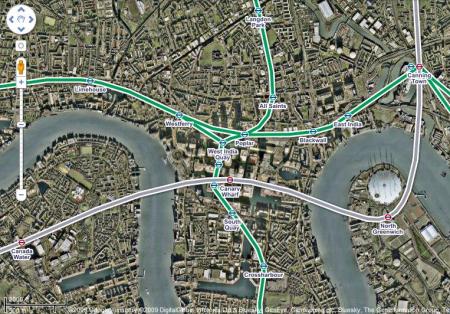
Similarly, La Defense includes an extension of the Paris Metro line 1, while also serving as the terminus to the T2 tramway, as well as a stop along RER A.
Currently, the area along the Anacostia includes a couple of Metro stations in the vicinity, but if these new areas are to serve large new developments, they need infrastructure to support that growth – beyond just streets and bridges. Even without McMillan Two’s narrowing of the Anacostia, transportation investments will be necessary for redevelopments in Poplar Point, the River Terrace power plant, and Buzzard Point. These could be McMillan Two’s numerous bridges across the Anacostia, with or without the narrowed river channel. Still, that framework is only one part of the equation – imagine what DC could do with a transit investment in the area on the scale of the DLR.
Green Infrastructure
By building off the principles of the McMillan Plan, McMillan Two is also building off the principles of the City Beautiful movement. The City Beautiful asserted that grand, monumental spaces could foster moral and civic virtue amongst residents, and that a harmonious physical order would promote a similarly harmonious social order.
The track record for meeting these lofty goals is inconclusive at best, but the City Beautiful certainly left Washington and other places with many practical (and beautiful) enhancements. Beautification efforts also tackled basic problems of infrastructure – sewers and utilities, sidewalks and streetscapes. The common critique of the City Beautiful is that it is solely an aesthetic treatment for planning, yet many of its basic elements functioned quite well and continue to do so today.
McMillan Two appeals to the beautiful elements of that tradition, but it lacks the functionality. Combined with the serious ecological concerns about narrowing the Anacostia, the functional elements of the plan seem to be in short supply.
However, the plan provides an opportunity, as well. One impetus for the plan (as well as Buras’ selection of Paris as his case study) is DC’s currently poor relationship with the water. DC urban waterfronts are in short supply, with only small stretches along Maine Ave SW, Georgetown, and Old Town Alexandria providing places where the city meets the water. Likewise, concerns over ecology and the Anacostia’s hydrology ought to be far more prominent in the McMillan Two agenda.
Together, these elements represent the opportunity to make this plan as the large scale, urban application of green infrastructure. During his interview on the Kojo Nnamdi show, Buras rightly points out that the Anacostia today is in no way a natural river. However, I believe we can both better connect the city to the waterfront while also mimicking natural marshes and ecosystems through the use of permeable pavings, bioswales, and other sustainable urban drainage systems. To date, most of these applications focus on small-scale projects, but this plan provides the opportunity for a large scale application. Furthermore, most of these drainage systems mimic natural ponds and marshes, and take their visual cues from those influences – this provides a chance to implement such systems in both an urban environment and in an urban design. How can stormwater detention and infiltration areas be effective public, urban spaces?
Like the transportation elements, use of this infrastructure is not predicated on narrowing the river. It can be applied to any plan, and would hopefully become part of the best practices across the city.
Implementation
The single greatest aspect of the McMillan Two plan is its breadth of vision and scope. Such breadth is also a challenge. Both the L’Enfant and McMillan plans featured a grand vision and scope, but they were also easily broken up into manageable chunks, making implementation easy. L’Enfant’s street grid took decades to build out, but surveying streets is a relatively easy task. McMillan’s monuments and public spaces evolved over the course of several decades as well.
McMillan Two’s big move, narrowing the Anacostia, cannot easily be broken up into chunks (if it can be done at all in good environmental conscience). For a plan with a scope of 100 years, you also need an implementation plan.
Potentially, it’s possible to meet all of McMillan Two’s goals without actually narrowing the river. If you were to combine base re-alingment (as the plan displaces the Navy Yard, Bolling AFB and the Anacostia Naval Air Station) with the construction of new bridges, but without the narrowing of the river, you’d still have a large area to redevelop according to the plan without the hydrologic hurdles.
Input
Neil’s inital post on the subject generated quite a few comments. This kind of plan requires public support, and gaining that support requires input from stakeholders through mediums like this. Comments and criticism will make this a stronger plan. My personal initial reactions to the plan have shaped my view of it, but only through a robust dialogue will the plan evolve beyond just the ideas of Mr. Buras and into a true civic vision for Washington DC.
Cross-posted at Greater Greater Washington




